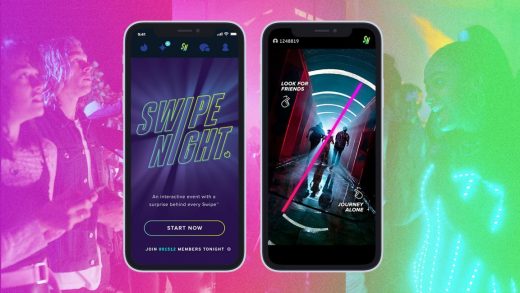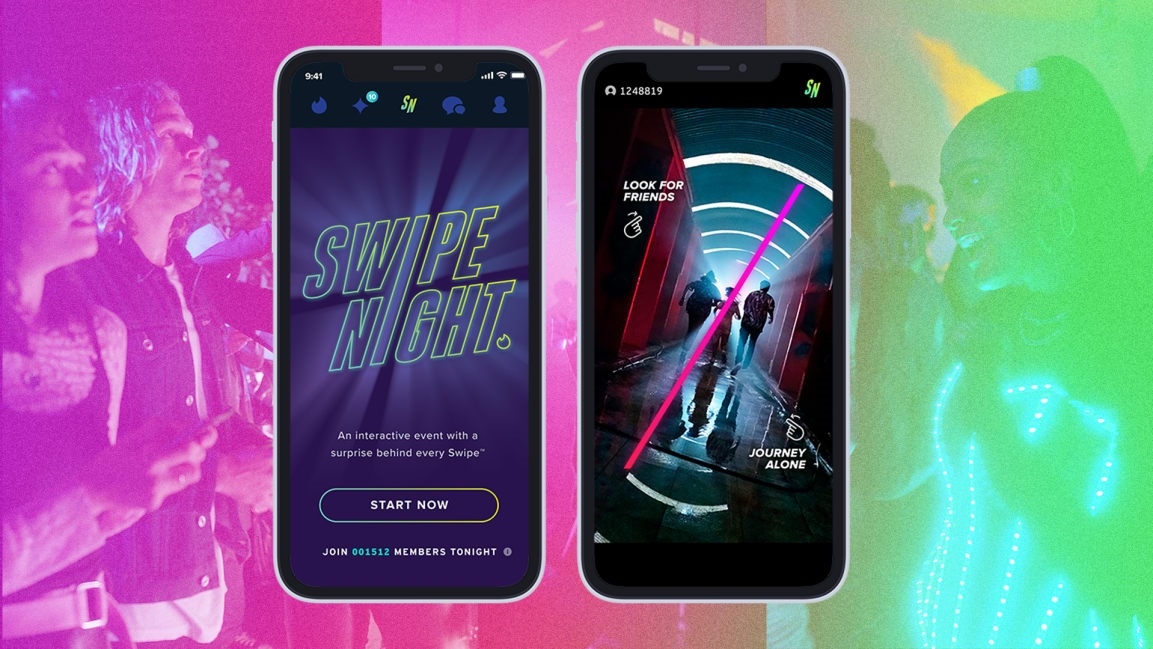Tinder’s new relationship goal: Get users to hang out, not just hook up
Back in April, as many countries were still enforcing stay-at-home orders amid the COVID-19 pandemic, online dating saw a surge in activity—even when meeting IRL wasn’t an option.
Tinder saw one of the bigger spikes, with 52% more messages sent globally and swipe volume among members under 25 also rising 39%, which isn’t so surprising given the fact that more than half of Tinder’s users are Gen Z.

[Photo: courtesy of Tinder]
“Gen Z has lived their social lives in a digital sense for their whole lives,” says Jenny McCabe, chief communications officer at Tinder. “This idea of the physical world and digital world being two different lives for Gen Z has not been the case. We’re all starting to understand that.”
With virtual concerts in Fortnite and even dating in Animal Crossing, the challenge Tinder is trying to meet is how to factor into Gen Z’s digital lives beyond the immediate scope of a dating service.
“We’ve been evolving to make Tinder a place where you can come and hang out and meet people, not just the place you come meet somebody and leave,” McCabe says.
To help facilitate that mission, Tinder has rolled out several new features in the last few months, including its video chat feature Face to Face, and it removed the paywall for Tinder Passport, allowing users to connect with people around the world.
But perhaps one of Tinder’s most ambitious endeavors to create more engagement in the app has been Swipe Night. The choose-your-own adventure dating series originally premiered last October in the United States and, after COVID-19 forced its postponement, relaunched this month, with an international rollout as well.
“It’s like a night out on the town without having to go out,” McCabe says. “It felt like the context was right. We could see that we were far enough away from the overwhelming nature of what’s happening in the pandemic. So that’s really how we made the decision to pause and then bring it back.”
During its initial run, Swipe Night led to 26% more matches compared to a regular weekend and a 12% increase in messages sent.
“We were interested going in to validate the concept of these concurrent experiences, that Gen Z members could enjoy [Swipe Night] but meet people along the way,” says Kyle Miller, head of the Z Team, a group within Tinder specifically focused on how to dial into Gen Z. “Participation overall was far beyond what we estimated. That was checkbox number one for us: Yes, there’s an appetite for this, and people understand this.”
Although production on season two of Swipe Night has been delayed, the relaunch of season one has been an exercise in fine-tuning a key product that could evolve into a more substantial part of Tinder’s strategy.

[Photo: courtesy of Tinder]
In addition to being adapted into 20 different languages, the relaunch of Swipe Night was shortened from four episodes to three to speed up the action; the window of time for people to experience the episodes increased from 6 hours to 38; and users were allowed to replay episodes to see the different outcomes of their choices.
To help inform Swipe Night‘s relaunch, the Z Team leaned on Z Labs, its “anti-focus group” of Tinder users.
“We call it the anti-focus group because of our approach into it,” Miller says. “We noticed these focus groups of putting Gen Z behind a double-sided mirror and observing them made them extremely uncomfortable. It also wasn’t great for us, either. We wouldn’t get the answer that they really meant, because they felt this pressure in those environments to give it. Our approach is actually forming a relationship with them for the longer term, where they know who I am and we know each other. It’s like more touchpoints over time.”
Z Labs evolved from Tinder U, a feature that launched in 2018 geared only toward college students. Through college reps, the Z Team was able to start compiling a network of users who would invite their friends. The initiative was informal at first, but during the beginning of the COVID-19 pandemic, Miller and his team formalized their efforts into Z Labs.

“We would be on Zoom calls with members across the country trying to grasp, what is changing? What are these new things you’re doing now to meet people?” Miller says. “We talk to them every week. It’s really for us to get a very honest, authentic sense of what’s happening in their lives, rather than us just reading headlines of articles and assuming that that’s applying to everybody.”
Having that close relationship with their core demographic will be a key component in Tinder building out more experiences like Swipe Night to achieve the company’s goal of edging the app into Gen Z’s life alongside other virtual hangouts.
“We’re always trying to be the place that 18-year-olds want to be. So we have to be looking to them and innovating for them on a regular basis,” McCabe says. “So for us, this is about making Tinder a place that you can hang out and have events. We just have to make more of those experiences for them. That’s the bigger vision: How do we make Tinder a place where you can come and hang out?”
Fast Company , Read Full Story
(53)



